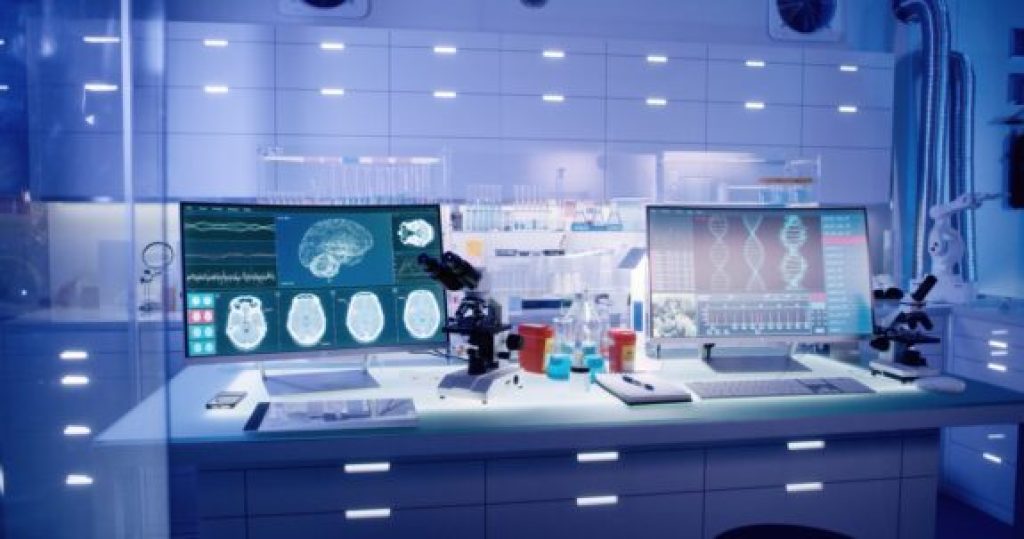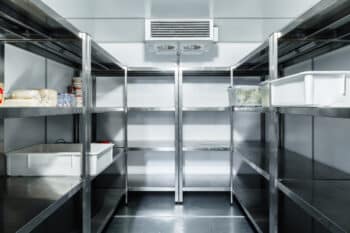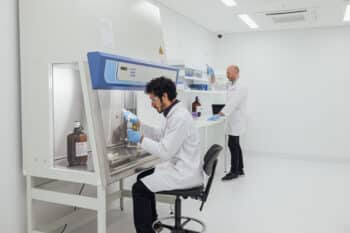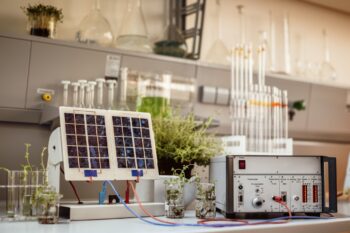Used in schools, pharmaceutical companies, government research, and trading standards bodies to name just a few, laboratories are found in all sorts of sectors. And with so many different tasks carried out in these different laboratories, the lighting systems and setups of these facilities are all going to differ as a result.
In a laboratory environment, there’s a lot to consider when it comes to lighting. For instance, will the lighting affect the rendering of colours or reveal imperfections on surfaces? Should it show the degree to which liquid turns cloudy? Will lab staff need to see the markings of a thermometer or pipette when carrying out their work?
Here, we’ll take a look at the most common types of laboratory lighting, and things to consider when kitting out your own lab.
Halogen lighting
Halogen bulbs feature a tungsten filament similar to incandescent bulbs, but are also filled with halogen gas. When the bulb lights, the tungsten from the filament evaporates into the bulb’s gas, illuminating the bulb.
The halogen gas then carries the evaporated tungsten particles back to the filament, where they’re then re-deposited. This facilitates lower-energy use for the bulb.
Key features:
- Many halogen bulbs are 10-20% more energy-efficient than incandescent bulbs
- Halogen bulbs start instantly, with no delayed warm-up time
- Fully dimmable
- Create a bright, clear and crisp light
Best used for:
Any kind of display lighting where bright light is needed. Your standard office lamp will usually use a halogen bulb. They’re suitable for use with microscopes, but they emit a lot of excess heat, which can cause specimens to degrade faster; you’ll need a heat-blocking filter to prevent this.
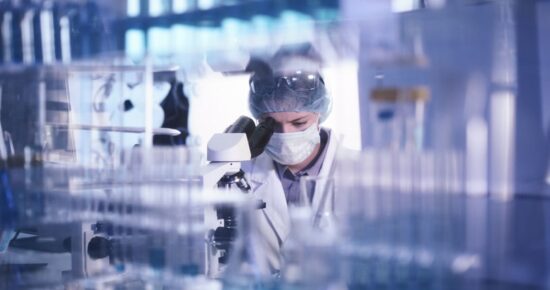
Light-emitting diodes
LEDs are light sources that are illuminated by the movement of electrons through a semiconductor material.
Key features:
- Uses up to 75% less energy than incandescent
- Can last up to 25 times longer than incandescent and halogen, and up to three times longer than most compact fluorescent lighting
- Starts instantly with no warm-up time
- Cooler to the touch than other varieties
- With no filament to break, they’re much more robust
- Small LED chips allow for more compact illumination in tighter areas
Best used for:
Because of their long lifespan and brightness that doesn’t decrease over time, LEDs are useful for experiments that run across several days or weeks. They’re also much safer than other lighting types; the emitted light from LEDs won’t cause discomfort or damage to eyes, and they don’t carry any risk of releasing toxic chemicals, which makes them the safest light source.
This means that LEDs are most suited to pathology labs. Pathology labs involve highly sensitive work where there is no room for error. LEDs illuminate work in ways that enhance the productivity, energy and alertness levels of workers in these kinds of lab environments.
Compact fluorescent lighting
CFLs contain mercury gas that produces invisible ultraviolet (UV) light when the gas comes into contact with electricity. When the UV light contacts the white coating inside the bulb, it becomes visible light.
Key features:
- Last eight-to-ten times longer than incandescent bulbs
- Use 75% less energy than incandescent light bulbs
- Can fit most light fixtures
Best used for:
If the lighting used in your fixtures and equipment is frequently turned on and off in short intervals, then it’s best to avoid CFL lighting. Turning them on and off in this manner causes their lifespan to reduce. They’re inexpensive, but their short lifespan means they’ll need replacing regularly, which is a cost that soon mounts up.
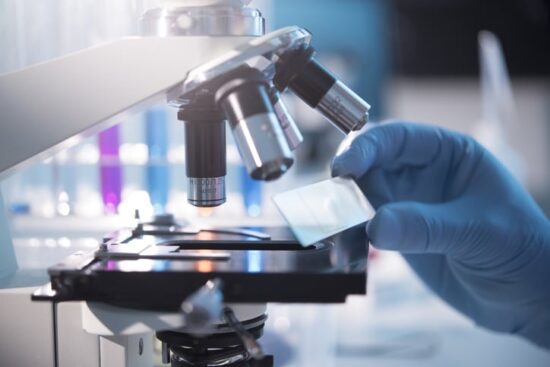
When used in a microscope, you must use a UV filter. This is because the UV light produced by CFLs can damage the human eye.
Laboratory lighting best practices
Whichever lighting you use in your laboratory, it’s important to consider general lighting principles and best practices in your lab design. Keep the following in mind when lighting your lab.
Avoid shadows by recessing general lighting
General lighting is your lab’s main source of lighting and is typically placed overhead. Recessed fixtures are the best option to choose in this regard. Because they’re placed directly inside the ceiling, they’ll eliminate the shadows that get in the way of being able to do your work. They’re also easier to clean too!
Focus your lumen on task lighting
In laboratory lighting, the lumen output (essentially, how bright a light is) should be focused on your task lighting, i.e. the lighting aimed at a plane of vision where a specified task is being performed. High lumen outputs for general lighting, and low lumen outputs for task lighting, defeats the point of the latter.
A rule of thumb: choose a lumen output for task lighting that’s always slightly higher than the output of general lighting.
Select vapour tight fixtures
Some labs work with gases and chemicals, and so may need to install vapour-tight fixtures. These fixtures stop gases, vapours and moisture from damaging the fixture. Since some fixtures can malfunction or even shatter when gas or high temperatures are present, vapour-tight fixtures are well worth investing in.
Choose shatterproof bulbs
Shatterproof bulbs are a good idea for similar reasons; even when they break, they won’t send glass flying everywhere. In a lab setting where outside variables can alter the outcome of an experiment and require starting all over again, shatterproof bulbs are an intelligent consideration.
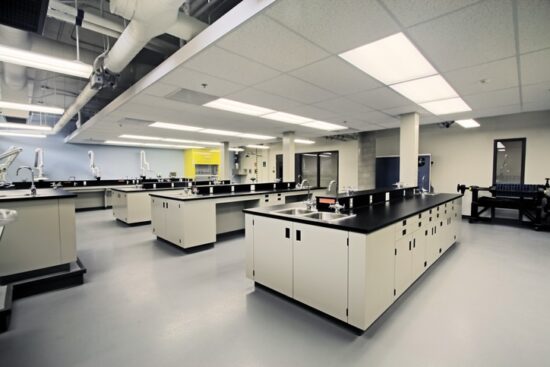
Keep the colour temperature consistent
Colour temperature also needs considering in a lab setting. Opting for a cooler temperature over a warmer ensures the proper colour rendering of what’s being studied, but you can also keep the colour temperature of your general and task lighting consistent throughout the entire space. If these things differ greatly, then it can be unpleasant on the eyes.
If you’ve an upcoming construction project to complete, then the team at InterFocus can help. For more information about our bespoke fitted labs, visit our homepage or call our team on 01223 894 833.

